As it turns out, some of those fears were justified.
Violent man-versus-machine conflicts saw members of the British working class destroying the devices that had replaced their jobs well into the 1800s, setting the stage for centuries of anti-robot rhetoric played out in books, movies and ideological movements
Today, serious fears of a "robot revolution" are only just starting to crystallize for the average person - but it's happening quickly, and spreading far beyond the confines of science fiction.
The year 2015 featured stories of robotic technology, artificial intelligence, autonomous weaponry and what the exponential rate of innovation in these sectors could mean for humanity.
And if foreboding statements by Stephen Hawking, Elon Musk and other tech industry leaders this year prove true, robot-human relations could take a nosedive sooner than many of us expect.
"If any major military power pushes ahead with AI weapon development, a global arms race is virtually inevitable," reads an open letter from July signed by Hawking, Musk, and Steve Wozniak among others. "The endpoint of this technological trajectory is obvious: autonomous weapons will become the Kalashnikovs of tomorrow."
— @mg
Here are some of the most "terrifying" news stories about robots from 2015, as judged by the reactions of our audience members, staffers and the world at large.
They took our jobs
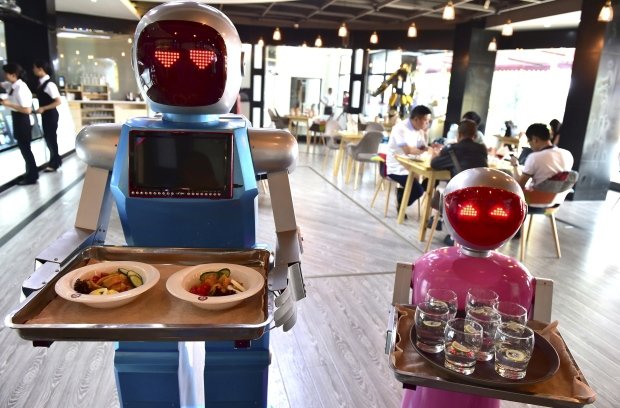
Japanese data scientists predicted in early December that more than half of all jobs in Japan could be lost to machines by 2035. The same has been forecast for the U.K., which could eventually see 50 per cent of its workers replaced by robots, according to a recent Bank of England study.
"Why? Because 20th-century machines have substituted not just for manual human tasks, but cognitive ones too," said Bank of England chief economist Andy Haldane of the study's results. "The set of human skills machines could reproduce, at lower cost, has both widened and deepened."
Indeed, robots demonstrated an
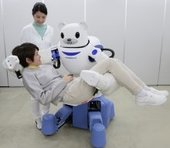
Friendly humanoid receptionists made their way from Japan to Canada this year, where they already had jobs lined up at Edmonton's Fantasyland Hotel.
Robots also made headlines in 2015 for working as bank tellers, department store greeters and even actors.
The health-care industry, too, continues to be rocked by new technologies that either promise, or already do everything from take care of dementia patients and perform surgery to sniff out cancer in humans.
Tree planting robots, delivery drones, robot first responders, flying farm workers, robo-garbage collectors and, of course, drivers, made waves as well.
Not even dogs are safe from technological unemployment, thanks to the advent sheep-herding drones.
Comment: Like sheep, we also are being herded to accept the unacceptable:
They did our chores (... on their own)
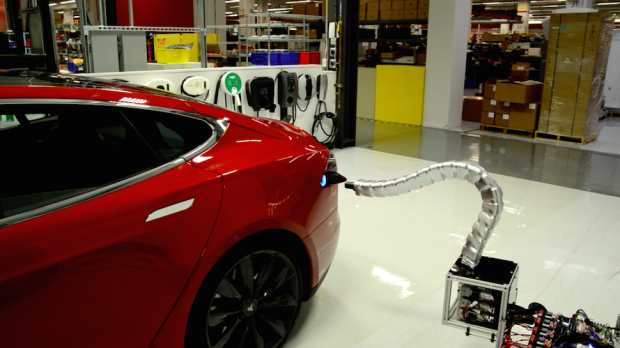
It's hard to say much that's negative about machines that take away our most dreaded household tasks, and yet, the very idea of a robot butler still creeps many people out - particularly now, with AI advancements that have seen bots teaching themselves how to do things without our help.
In August, Tesla unveiled a functional charger prototype for its Model S electric car that can purportedly find a charging port, plug itself in, and juice the vehicle up without any sort of human assistance.
Another project deemed spooky on the viral web this year was Google's deep dive into Artificial Neural Networks and the ensuing images of "dreams" machines were said to have had.
An EU-funded project that made headlines in August similarly featured a robot that was "teaching" itself to cook with information it found online.
And robots are now being taught to disobey humans - for their own safety.
Our safety, on the other hand, is being tackled through research that involves robots punching humans.
They spied on us
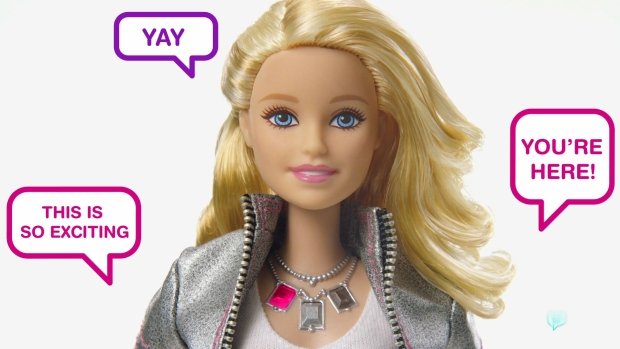
Mattel's Hello Barbie toy made waves earlier this year when privacy advocates learned that the "interactive doll" could record children's playtime conversations and respond once the encrypted audio had been transmitted to a cloud server.
The toymaker was criticized for the doll's eavesdropping and data-gathering functions, but it was far from the first company to put products with these capabilities into people's homes.
Former Ontario privacy commissioner Ann Cavoukian went after Samsung in February after it was discovered that its SmartTVs could record private conversations taking place within homes and then share them with third-party services.
Internet-connected household devices such as baby monitors, fitness trackers and other "always-listening" tech products were also slammed as a threat to our privacy in 2015.
They started to look like us

While they're nowhere near as lifelike as what was seen in the hit 2015 film Ex Machina, humanoid robots with elastic polymer skin and complex facial motor systems brought us one step closer to seeing machines that are indistinguishable from humans - on the surface, at least.
Some even described the latest iteration of Japan's Geminoid F as "sexy" when she made her debut at the World Robot Conference in Beijing last month.
They threatened to replace our lovers & families
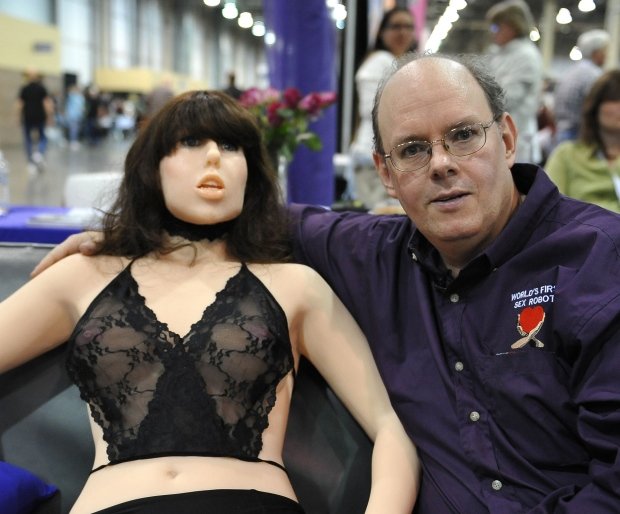
"Introducing sex robots that could replace partners is the extreme of this trend, where we start to objectify our human relationships," said one of the project's organizers at the time. "In five to 10 years time this will be a common product in any random sex store."
More recently, chatter has been building about the possibility of machines like Japan's adorable "emotional robot" Pepper and others like it being used to raise children - or even act as a substitute for children (and/or friends)
Once again, pets are not safe from being replaced in this context either.
They got better at killing us
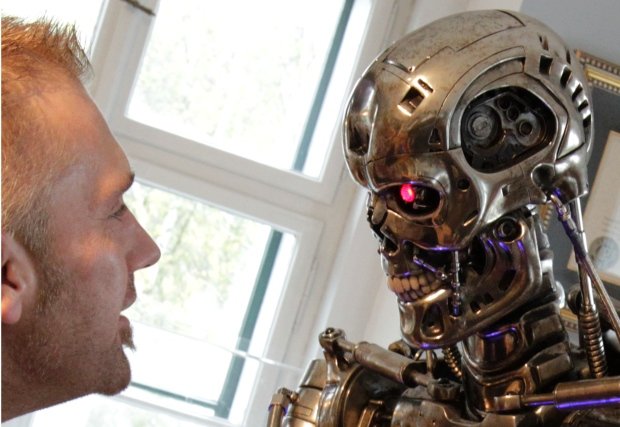
Also scary was the volume of stories this year about military advancements in robotic technology.
Lethal autonomous weapons systems (LAWS) were the subject of hot debate all year as lawmakers deliberated over how to regulate robots that could eventually have the ability to select, target and engage in deadly attacks without human intervention.
The United Nations will host a third meeting to discuss the issue with representatives from around the world in April.
Meanwhile, technology companies and government agencies continue to build increasingly deadly machines that could one day replace humans on the battlefield — or rise up and kill us all, if you read some internet forums.
They made us inexplicably angry

A pair of YouTube pranksters later claimed responsibility for a fake video of the attack, and while online users decried their actions, many people also appeared to delight in watching someone kick Boston Dynamics' Spot the robot dog.
Research released this year by Osaka University also indicated that violence against robots could be a growing issue - particularly among children, who were observed hitting, kicking and verbally abusing a shopping robot in surveillance footage from a Japanese mall this year.
Rise of the cyborgs?
You know what they say: If you can't beat 'em, join 'em... though in this case, it would be more like "incorporate them into your body."
Ray Kurzweil, Google's director of engineering and a noted futurist and inventor, made a startling prediction in June while speaking at a New York conference.
"In the 2030s, we're going to connect directly from the neocortex to the cloud... We will be able to fully back up our brains."Take that for what you will, but it's worth noting that 78 per cent of the 147 predictions Kurzweil made in his 1999 book The Age of Spiritual Machines were deemed "entirely correct" within 10 years.
Among those predictions were the rise of portable computing, wireless technology replacing cables and the distribution of music in an entirely digital form.
Just saying.
Comment: SoTT has been tracking robotics for many years. The following is yet a small sample of related articles:
Killer robots pose latest militant threat: expert
Rise of the Machines: Military robots to be armed with Tasers
A Robot Bride by 2050?
Robots Capable of "Deceiving Humans" Built by Crazed Boffins
US Navy Report Warns of War Robots Going "Terminator"
Robots Evolve And Learn How to Lie Rob
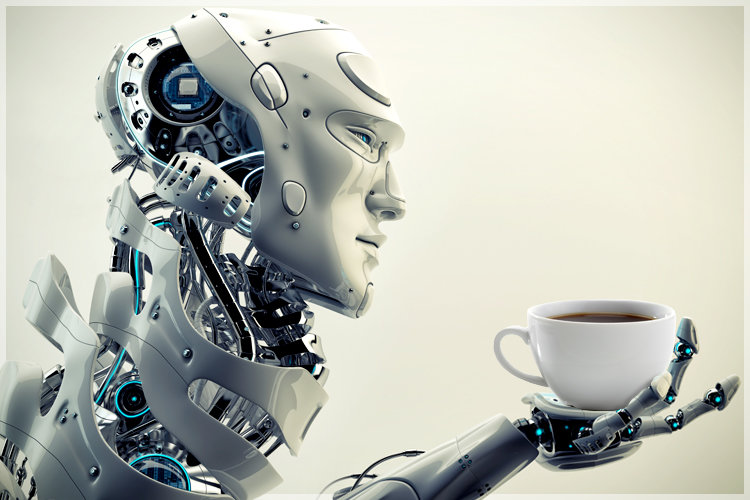



Human beings and even corporations are described as legal persons governed by laws. As Isaac Asimov anticipated, we have reached a time when defining the parameters of robotic behaviour is most relevant. We should be creating a universally accepted, comprehensive set of laws, rules, morals and social norms for the robots of our future.
It is not so hard these days for most of us to envisage a time when the robots of our future can be created to look, act and feel like human persons or that they may one day pass on their genealogical memories by evolving new generations of computers. Nor is it so hard to accept the concept of time travel.
If the robots of our future are like us, can recreate themselves, and have the power to time travel it becomes logical to deduce that that is what they did and that we humans are the highest generation of robotics.
It is not such a stretch of imagination these days to recognise that humans are in fact, the most highly evolved, self-replicating, sentient generation of robots.